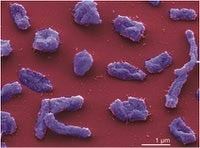Domain Archaea Class Halobacteria Scientific name Halorhabdus Rank Genus | Kingdom Euryarchaeota Family Halobacteriaceae Phylum Euryarchaeota Order Halobacteriales | |
 | ||
Similar Halogeometricum, Haloterrigena, Natrialba, Natronorubrum, Halorubrum | ||
In taxonomy, Halorhabdus is a genus of the Halobacteriaceae.
Contents
Description and significance
Halorhabdus utahensis (salt-loving rod) is a motile, Gram-negative, extremely halophilic archaeon that forms red, circular colonies. It grows at the temperatures between 17 and 55 °C, with optimal growth occurring at 50°C. It can also grow over a pH range of 5.5–8.5 with the optimal pH value between 6.7 and 7.1. Further, with its extremely high salinity optimum of 27% NaCl, Halorhabdus has one of the highest reported salinity optima of any living organism.
Genome structure
The genome of Halorhabdus was sequenced in August 2014. The G + C content of its DNA is estimated to be 64%.
Cell structure and metabolism
The cells of H. utahensis are extremely pleomorphic, exhibiting any shape from irregular coccoid or ellipsoid to triangular, club-shaped or rod-shaped forms. The rod-shaped and ellipsoid cells are 2-10 by 0.5-1 µm and 1-2 by 1 µm in size, respectively, and the spherical cells have a diameter of approximately 1 µm. The archaeon uses only a limited range of substrates, such as glucose, xylose, and fructose, for growth, and is unique in its inability to utilize yeast extract or peptone. Other substances that did not stimulate the organism's growth include organic acids, amino acids, alcohols, glycogen, and starch.
Ecology
Strains of H. utahensis were isolated from samples from Great Salt Lake, Utah, USA.
